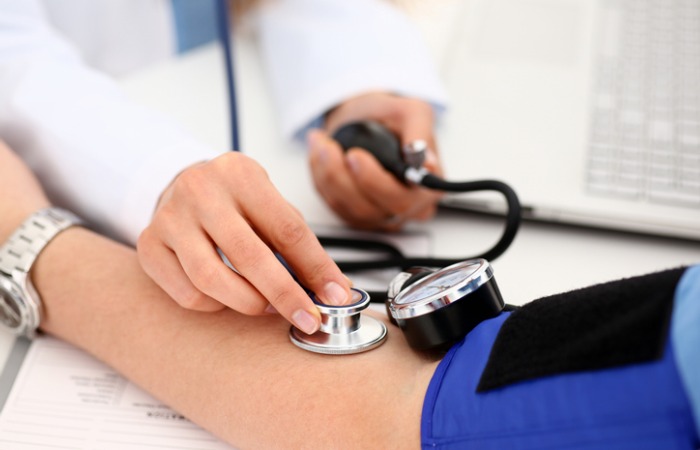
Medical professionals have long known that blood pressure measured in a doctor’s office may not match your true normal blood pressure. This may be due to one of two conditions that cause “false” readings, and recent research shows that both call for more consistent and accurate blood pressure monitoring.
When stress and anxiety caused by a clinic or hospital visit lead to higher-than-normal blood pressure readings, the effect is known as white coat hypertension (WCH), or “white coat syndrome”, named for the coats doctors wear. WCH occurs in about one in five people. It’s not necessarily a response to being in the presence of a doctor or nurse; the anxiety that some people have before and during a medical visit can trigger the syndrome.
The other condition, known as “masked hypertension,” is the opposite of WCH. Masked hypertension occurs when people normally have high blood pressure but it doesn’t show up when measured in the doctor’s office.
WCH can lead to an incorrect misdiagnosis of high blood pressure (hypertension) and overmedication. It also may indicate that the person’s blood pressure tends to rise when he or she has anxiety for other reasons. Masked hypertension, on the other hand, can prevent needed treatment for high blood pressure.
Changes in Guidelines
Suzanne Oparil, MD, director of the UAB Medicine Vascular Biology and Hypertension Program, says WCH has become an increasingly important issue since 2017. That was the year that the American College of Cardiology and the American Heart Association (ACC/AHA) jointly released new guidelines that lowered the definition of high blood pressure from 140/90 to 130/80 (120/80 or less is considered normal). Dr. Oparil says the guidelines raise concerns that health care providers may not be taking WCH into consideration as often as they should.
“To get an accurate blood pressure reading, a patient should be in a quiet setting, seated with both feet on the floor, for at least five minutes,” Dr. Oparil says. “But we’ve seen in many clinical settings that patients are rushed through the visit. They sit down for an immediate blood pressure reading while being asked questions about medications, their health history, marriage status, and other things. Most patients are already worried about what brought them to the clinic in the first place, and right away they have the additional mental task of trying to correctly answer questions. The resulting anxiety can elevate blood pressure 10 points or more.”
Studies have shown that clinics rarely take two or more blood pressure readings, even though the ACC/AHA guidelines suggest that doing so could reduce the effects of WCH. There is no method for eliminating WCH, but measuring blood pressure several times at home or work and comparing those results with the clinic readings may at least indicate that the person has the syndrome. Studies also suggest that a sub-group of people who experience WCH may be at greater risk for developing actual high blood pressure. Therefore, it’s important to identify and monitor people with the condition and to regularly check your blood pressure when relaxed.
Paul Muntner, PhD, professor of Epidemiology at the UAB School of Public Health, led a study on this issue and published the results in 2019. It suggests that nearly 93% of adults in the United States who show high blood pressure when measured in their doctor’s office but do not take blood pressure medication should be screened for WCH.
The researchers also discovered that many adults suffer from masked hypertension.
“For some people, a doctor’s office is a place they’re relaxed,” Muntner says. “They are away from job stress, traffic, and family issues. Masked hypertension is associated with a high risk for heart disease and stroke. Therefore, it is important that people get their blood pressure measured correctly, so they can have hypertension diagnosed and can get started on medication to lower their blood pressure.”
Home Testing
The blood pressure machines at pharmacies and grocery stores may or may not be accurate. The AHA recommends measuring blood pressure at home using a device with an upper arm cuff that has been checked for accuracy. Inexpensive home versions can be purchased online and from pharmacies. Patients should talk to their doctor about which devices work best and how to accurately use them. Blood pressure should be measured twice in the morning and twice in the evening for a week at a time. Devices that record readings eliminate the need to write down the results.
Muntner says accurate readings are important for getting the correct treatment.
“Home blood pressure monitoring will better inform the physicians as well as the patients,” he says. “That means physicians aren’t starting patients on medication when they may not have high blood pressure. It also ensures that doctors are starting treatment on patients who do have hypertension or are at risk for cardiovascular disease.”
Click here information about cardiovascular services at UAB Medicine.
